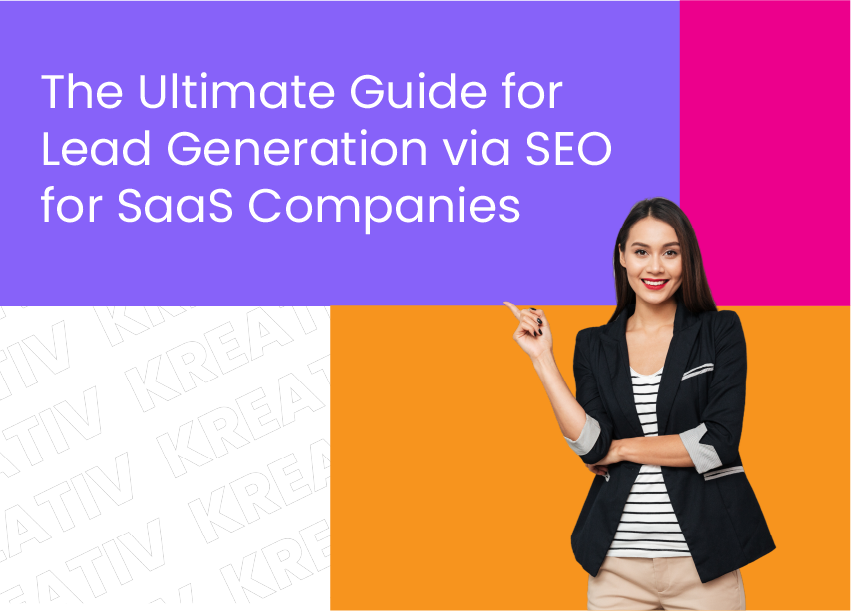Don’t make the mistake of taking the traditional SEO approach if you are running a SaaS business. SEO for SaaS companies requires a different mindset, strategy and execution to be able to drive significant ROI. SaaS SEO must address longer sales cycles, solution-focused search intent, and technical decision-makers. SaaS businesses usually target global markets, making the SaaS landscape highly competitive. We have done the hard work of putting together a well-thought-through strategy, taking cues from 50+ case studies so that you can nail SEO for your SaaS business in 2025.
Step 1: Perform an impact-focused technical review
Use AI-driven tools to run a comprehensive technical audit of your website. These tools help you locate problems that may negatively impact your site’s SEO. Identification of these problems will help you strategize your SEO plan more accurately.
Run several audits to check for any technical issues with your website. Use the following AI tools:
- Semrush and Ahrefs to identify duplicate content, broken links and missing meta tags.
- Google Page Speed Insights and GTMetrix to evaluate your website’s loading speed.
- Google’s mobile friendly test tool to see if your website is mobile-friendly or not.
- Moz and DeepCrawl to check proper usage of headers and XML sitemaps
Step 2: In-depth competitive analysis
Study competitor websites to identify the gaps they are leaving behind. Tools like SEMrush and Ahrefs can help you compare your site to that of competitors. You can locate ranking keywords that your competitors still need to optimize fully. You can create more in-depth and relevant content to take advantage of.
Assess backlinks for competitor websites and see which are the best sites they are linking to. You can target those sites, too, and secure high-quality backlinks to amplify your authority and soar search engine results. Identify broken backlinks with tools such as SEMrush and Ahrefs. These tools scan your website giving you a detailed report of broken links. Once identified, you can redirect these broken links to relevant pages on your website.
Step 3: Conduct user-centric keyword research
Base your keyword research efforts on user intent and not just search volume. Identify high-ranking keywords using Ahrefs and SEMrush and then use the results with insights collected from user intent tools such as Hotjar. Prioritize long-tail keywords and align them with user behavior to attract the right audience and enhance conversions. It is also recommended to have a fair mix of high search volume – low intent keywords and low search volume – high intent keywords in your overall target bucket.
Step 4: Align keywords to the buyer journey
Aligning keywords to the buyer journey allows your content to speak to potential customers at each stage, right from initial awareness to final purchase. Categorize keywords as top of the funnel using broader terms, mid-funnel using specific options, and bottom of the funnel using action-oriented words. This is one of the best SaaS SEO tips that increases conversion likelihood.
Step 5: Create topic clusters focused on core customer challenges
Build SEO authority with topic clusters, especially when tackling specific problems your SaaS solution has solved. Initiate by identifying the core issues of your audience and then create a pillar page that provides an in-depth analysis of the topic. This is a crucial aspect of B2B SaaS marketing that will work wonders for your brand.
Not feeling like reading? Listen about this topic in Podcast.
Next, write comprehensive articles on various topics linked to the problem you are addressing. Link these articles back to the pillar page you created. This helps reinforce site authority while boosting search engine rankings. Plus, it helps your audience find interconnected and valuable content that addresses their problems.
Step 6: Optimize for UX and SEO
Google’s Core Web Vitals prioritize website interactivity, loading speed, and visual stability metrics. This means that a great user experience will benefit your website regarding search engine rankings. Ensure your site is navigable from multiple devices and by all kinds of users, even those with disabilities. Incorporate features like readable font sizes, alt text for images, and keyboard navigation to enhance organic traffic.
Step 7: Optimize for AEO (AI-SEO)
If companies want to leverage SEO in 2025, they must embrace AI-SEO. AI-powered tools can help automate and improve tasks such as keyword research, content optimization, and competitor analysis. Companies can also personalize user experience by customizing content to suit user preferences. AI also allows you to automate routine tasks like link building, technical audits, etc., to help you adapt quickly to evolving market trends and search algorithms.
Step 8: Focus on snippet ranking
Optimize content to feature in snippets in search engine results. This will help brands improve their click-through rates and visibility. Craft informative yet concise answers to user queries within the content to enhance snippet chances. Implement schema markup to enhance search engine understanding and display rich snippets. Lastly, focus on user intent by creating content that directly addresses user needs.
Bottomline
The right SaaS SEO strategy will drive traffic to your site and increase organic traffic, causing a surge in your ROI. If you want to elevate your SaaS business, invest in a well-planned SEO approach to help you cut through the noise and stand out from the crowd. At Kreativ Street, we provide customized SEO strategies for SaaS companies designed to fuel your growth. We also specialize in providing a fully tailored strategy concerning SEO for SaaS startups. We have a loyal client base that vouchs for our services and are proud of them. If you want to take your SaaS brand to the next level, let’s talk and make great things happen!


